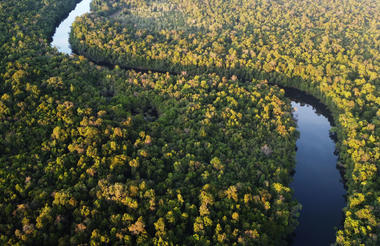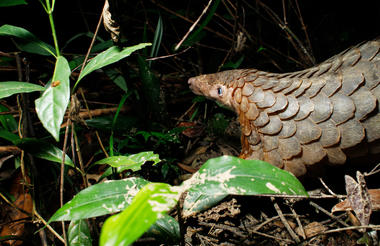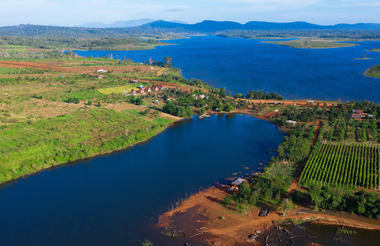Arrival day in Phnom Penh. Transfer to hotel and time permitting visit some highlights.



Full Day Phnom Penh City Tour: Start your tour of Cambodia’s capital at the stunning Royal Palace complex, home to the Cambodian royal family and a symbol of the nation. Here you will see beautiful gardens landscaped with tropical plants and the Throne Hall where the royal receptions are held and the Cambodian king's coronation took place. Continue to the Silver Pagoda, named after the 5000 silver tiles covering the floor, each weighing 1kg. Inside are some of the country's most cherished treasures, including a life-size gold Buddha studded with 9584 diamonds, the largest weighing 25 carats. Leave the Royal Palace and continue to the nearby National Museum, home to the world's finest collection of sculpture from the Angkor period. The exquisite building was completed between 1917 and 1920 and features a lush courtyard garden surrounded by collections from the pre-Angkor, Angkor and post-Angkor periods. You will then have the option to learn of the Khmer Rouge’s horrific crimes at Tuol Sleng, a former high school that the Khmer Rouge turned into a centre for interrogation, torture and death. 17,000 people passed through the gates of this prison and only seven lived to tell the tale. The Khmer Rouge were meticulous in their record keeping, photographing all the prisoners and many of these haunting black and white images are on display in the cells. Tuol Sleng is a profoundly moving experience and not everyone will want to visit. However, it is key to understanding the hell into which Cambodia descended and how far it has come in the years since. Finish your tour at the Killing Fields of Choeung Ek. An old Chinese cemetery, Choeung Ek was turned into an extermination camp for political prisoners. The remains of 8985 people were exhumed from mass graves and are kept in a memorial stupa here. Despite the horrors of the past, it is a peaceful place to go and a tranquil spot to reflect on the tragic events that engulfed Cambodia and its people.
Recommended: Evening CLA On Stage Shows at National Museum: It is a series of 3 rotating shows at the National Museum of Phnom Penh, featuring a wide range of traditional performing arts. With more than Apsara dances, we offer you the chance to discover the diversity of Cambodian culture and traditional arts through original and enjoyable pieces, set in the splendid gardens of the National Museum. In addition to giving a unique opportunity to experience Cambodian culture and arts, CLA (Cambodian Living Art) aims at creating regular, well-paid work for emerging arts professionals in the arts sector.
Time: 7-8pm, doors open at 6.30pm.
Days: Monday, Wednesday, Friday, and Saturday.



Morning departure from Phnom Penh.
Join a patrol with the Wildlife Alliance Rangers and go trekking through the dense Cambodian jungle along abandoned poaching and logging trails. Visit the Ranger Station where the confiscated equipment of poachers and loggers – including traps, improvised hunting rifles and even chainsaws – is on display.
Then kayak down the Preak Tachan River, or take one of the self-guided hikes along our carefully selected trails and discover the rich diversity of flora and fauna and get a glimpse of macaques, gibbons, hornbills and other rare wildlife found in the Cardamom Mountains.
- Disembark from Trapeang Rung Resort Pier at 14.00 on a 1-hour boat ride down the Preak Tachan River to Cardamom Tented Camp.
- On arrival you will get a brief introduction on the conservation and protection work of Wildlife Alliance.
- Settle into your comfortable safari-style tent.
- Go on an exploratory hike in the jungle around the camp.
- Relax at the riverside restaurant as the sun sets over Botum Sakor.
- Dinner and overnight stay at Cardamom Tented Camp.
Meals included: dinner



- After an early breakfast, meet the Wildlife Alliance Rangers together with an English speaking guide and embark on a patrol over a network of abandoned poaching and logging trails through the dense forest.
- Keep your eyes peeled for wildlife, like macaques, gibbons or hornbills.
- Stop by the ranger station, where confiscated snares, traps and improvised hunting rifles are on display. After enjoying lunch at the station, kayak or hike back to the camp.
- Dinner and overnight at Cardamom Tented Camp.
Meals included: breakfast, lunch and dinner



- Enjoy breakfast at your leisure. If you are an early riser, go on a self-guided hike on the trails around the camp or join one of our other activities such as the early morning wildlife boat ride.
- At around 10.00 , board the boat back to Trapeang Rung.
Transfer to Kampot
Meals included: breakfast



Free time in Kampot. Visit pepper farm or head up Bokor hill for fab vistas. Kep is about 30min drive away and worth a day trip.
Spending 3nts here would allow you to visit Bokor and Kep while having base in Kampot.



Transfer to Sihanoukville pier and ferry to Koh Rong Island. Check-in at your cozy resort and enjoy beach time.



Relaxing beach time on Koh Rong.



Boat and transfer to Sihanoukville airport for flight to Siem Reap 1,15hr.
Recommended Evening Visit Phare Modern Circus Shows: In the evening we head out to the home of the innovative circus performers from Phare Ponleu Selpak. Their regular modern circus show under the Big Top is proving very popular in Siem Reap and in each show they display a variety of disciplines including acrobatics, choreography, juggling, clowning, live music and much more. A pre-show dinner can also be arranged.



Early Morning Visit Ta Prohm (07:00am) and Walking Tour from Ta Nei to Preah Khan:: We rise early morning to travel to Ta Prohm temple. Ta Prohm has been abandoned to the elements, a reminder that while empires rise and fall, the riotous power of nature marches on, oblivious to the dramas of human history. Left as it was ‘discovered’ by French explorer Henri Mouhot in 1860, the tentacle-like tree roots here are slowly strangling the surviving stones, man first conquering nature to create, nature later conquering man to destroy. We contiunue our walk tour to visit a little temple of Ta Nei to one of Angkor’s most impressive sights and offers a real insight into the size and scale of Angkor. We begin our walk at Ta Nei, a beautiful and very atmospheric temple set in the forest. After Ta Nei, we continue our tour to the mighty temple of Preah Khan or 'Sacred Sword', built by King Jayavarman VII in the late 12th century. Sister temple to Ta Prohm, the cruciform corridors here are impressive and there are some wonderful carvings adorning the walls, including the spectacular hall of dancers. Look out for the curious two-storey structure that is almost Grecian in inspiration. This is one of the few temples originally dedicated to Buddhism and Hinduism. The original eastern entrance was for Mahayana Buddhists, while the other cardinal points represented the Hindu trinity of Shiva, Vishnu and Brahma.
Afternoon visit Angkor Thom & The Bayon: Angkor Thom (Big Angkor) is a walled and moated royal city and was the last capital of the Angkorian Empire. After Jayavarman VII recaptured the badly damaged Angkorian capital from the Cham invaders in 1181, he began a massive building campaign across the empire, constructing Angkor Thom as his new capital city. He began with existing structures such as Baphuon and Phimeanakas and built a grand enclosed city around them, adding the outer wall and some of Angkor's greatest temples including his state-temple, Bayon, set at the centre of the city. There are five entrances (gates) to the city, one for each cardinal point, and the victory gate leading to the Royal Palace area. Each gate, as well as much of Jayavarman VII's architecture is crowned with four giant faces. The giant stone faces of Bayon have become one of the most recognizable images connected to classic Khmer art and architecture. There are 37 standing towers, most sporting four carved faces oriented toward the cardinal points.



Evening
Visit Banteay Samre, Landmine Museum and Banteay Srei: We travel through the traditional village of Preah Dak to the 12th century temple of Banteay Samre. Built by King Suryavarman II, the genius behind Angkor Wat, this temple has been extensively restored. The temple is unique in that over-quarrying of sandstone led to the use of laterite for the roofed corridors. The pediments above the inner doors here include some of the most accomplished carving from the Angkor period.
We continue to visit the Cambodia Landmine Museum to learn more about the scourge of landmines and the shadow they cast over rural communities in Cambodia with a visit to this flagship museum promoting mine awareness and education.
The Land Mine Museum displays a large collection of weapons of war, including guns, rifles, rocket launchers, mortars, bombs and landmines. The site includes a mocked up minefield and visitors can attempt to locate the deactivated mines. The museum is a rich resource of information about landmines and UXO with many educational displays detailing how certain mines are used and in what situations. There is also a DVD available telling the story of landmines and UXO in Cambodia and the disastrous impact they have had on the population. Not only a weapon of war, they are a weapon against peace. The Landmine Museum promotes land mine accident prevention awareness and public education; and provides educational facilities, programming and rehabilitation facilities for survivors of land mine injuries. It also provides education and support for dozens of at-risk, land mine-affected children who have suffered overwhelming hardships. The Cambodia Landmine Museum was created so that it might serve as a place of healing for bodies, hearts and minds.
We continue further north to Banteay Srei, Angkor’s ultimate art gallery. This petite pink temple is the jewel in the crown of Angkor-era sculpture. The elaborate carvings here are the finest found in Cambodia and the name translates as ‘Fortress of the Women’, thanks to the intricate detail here, considered too fine for the hands of a man. Originally believed to date from the latter part of the Angkor period, inscriptions at the site suggest it was built by a Brahman in 967. However, some architectural historians have suggested that the inscriptions may date from an earlier structure on this site and the temple is in fact later, marking a high-water mark in Khmer sculpture.



Free time in Siem Reap. Join cycling tour, enjoy spa treatments or visit artisans d' Angkor silk and other arts and crafts making workshops.



Transfer to Siem Reap international airport SAI.






